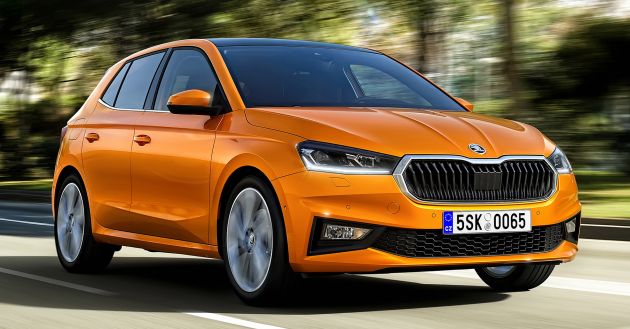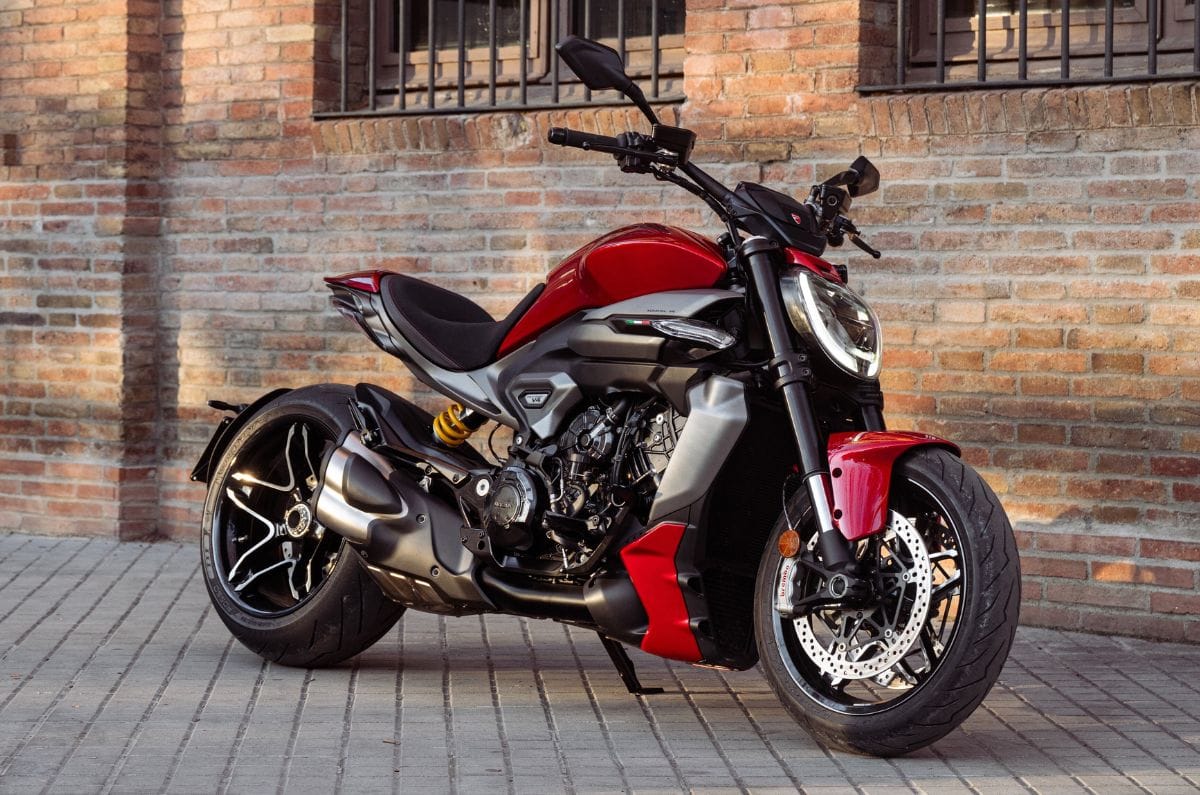Fourth-generation Skoda Fabia revealed in full – five engine variants, Travel Assist, over 900 km fuel range
Following the release of details for the fourth-generation Skoda Fabia hatchback, the manufacturer has revealed the MQB A0-based model in full. The new model brings more interior space and luggage accommodation through larger exterior dimensions, here measuring 4,108 mm long, 1,954 mm wide (including mirrors), 1,459 mm tall with a wheelbase of 2,564 mm.
These make the fourth-generation car 111 mm longer and 48 mm wider than its predecessor, while wheelbase has now grown by 94 mm. Luggage capacity is now 380 litres – up from 330 litres in the previous-generation Fabia – or 1,190 litres with the rear seats folded.
Five engine variants are offered for the fourth-generation Fabia. Starting the range is a 1.0 litre three-cylinder MPI Evo petrol in 65 PS/93 Nm and 80 PS/93 Nm outputs, both paired with a five-speed manual. The turbocharged 1.0 litre TSI Evo in 95 PS/175 Nm form is also paired to a five-speed manual.
Meanwhile, the 110 PS/200 Nm output version of the three-pot turbo petrol can be paired with either a six-speed manual or seven-speed DSG dual-clutch automatic. The top powertrain variant, a 1.5 litre turbocharged TSI Evo four-cylinder petrol with cylinder deactivation produces 150 PS and 250 Nm of torque, and is mated to a seven-speed DSG as standard. This does the 0-100 km/h run in 7.9 seconds, and a top speed of 225 km/h.
When equipped with the optional 50-litre fuel tank (the standard tank holds 40 litres), the 1.0 litre, three-cylinder versions of the Fabia can cover more than 900 km on a single tank based on the WLTP cycle, says Skoda, and all engines comply with the Euro 6d emissions standard.
Efficiency in the fourth-generation Fabia is aided by improved aerodynamics, which now offer a drag coefficient of 0.28; down from the previous car’s figure of 0.32, says Skoda.
This is partly achieved through a new cooling shutter setup in the front bumper’s lower air inlet, which closes when additional cooling is not required, and thus yielding a saving of 0.2 l/100 km in fuel consumption at a constant 120 km/h, or a CO2 emissions reduction of 5 g/km over each kilometre driven.
Further aero improvements to the Fabia body include air curtains on the front bumper to guide air along the sides of the car, while the side mirror housings have been redesigned for less drag and to direct a more targeted airflow rearwards, where a rear spoiler and ‘finlets’ continue to manage airflow.
With up to 25% of a car’s aerodynamic drag contributed by its wheels, Skoda offers two of its six wheel designs – in 16- and 17-inch sizes – with plastic inserts for the Fabia. Wheel sizes on the Fabia range from 14 to 18 inches. Aero work on the Fabia is further complemented by a total of 12 underbody panels which covers a larger area, up from the previous count of three, says Skoda.
Three trim levels are offered for the Fabia at launch – Active, Ambition and Style – in which the dashboard is offered in six different versions. As standard, the Fabia interior gets copper and grey contrast stitching, and the top Style trim variant gets LED ambient lighting that can illuminate the dashboard’s decorative trim in white or red.
The Fabia gets digital instrumentation for the first time, where the driver gets a 10.25-inch display that offers four different layouts, while the optional Dynamics pack offers a fifth Sport layout in the Virtual Cockpit setup. As standard, the Fabia gets analogue instrumentation with a 3.5-inch information screen, and dual-zone Climatronic climate control is offered as an option.
Infotainment comes courtesy of a three different systems, which feature screens measuring 6.5-, eight- and 9.2 inches. The top ‘Amundsen’ infotainment setup gets the largest 9.2-inch display, featuring navigation backed by online data, says Skoda. this features gesture control as standard, and can be specified with the Laura digital voice assistant that understands 15 languages.
Device connectivity features wireless SmartLink as well as Android Auto and Apple CarPlay, and includes up to five USB-C sockets, including one at the rearview mirror for powering a dashcam; inductive phone charging is optional. The Skoda sound system can be optioned with an additional amplifier and subwoofer in the luggage compartment.
In terms of safety, the fourth-generation Fabia gets the Travel Assist driver assistance suite that aids the driver in steering and speed control. This is comprised of adaptive cruise control that functions up to 210 km/h, and Lane Assist helps make corrective steering inputs. Travel Assist also detects if the driver is physically in contact with the steering wheel to ensure the driver is ready to take over control.
Also included is Side Assist, or blind spot detection, as well as Park Assist which works at speeds of up to 40 km/h to detect parallel and perpendicular lots, and can take over steering inputs when parking. Manoeuvre Assist detects obstacles in front of and behind the vehicle and can apply the brakes automatically, and is joined by traffic sign recognition with predictive pedestrian and cyclist protection.
Passive safety kit includes up to nine airbags in the Fabia, located at the driver and front passenger, curtain and front side positions as standard, while driver’s knee and rear side airbags are optional. Isofix and top tether anchors are standard at the rear seats, and can be optionally specified for the front passenger seat.
A total of nine exterior colours are offered for the fourth-generation Skoda Fabia, including the Phoenix Orange and Graphite Grey pair of colours which make their debut on the new hatchback range.
GALLERY: Fourth-generation Skoda Fabia













































The post Fourth-generation Skoda Fabia revealed in full – five engine variants, Travel Assist, over 900 km fuel range appeared first on Paul Tan's Automotive News.
from Paul Tan's Automotive News
Read The Rest:paultan...









































































Post a Comment